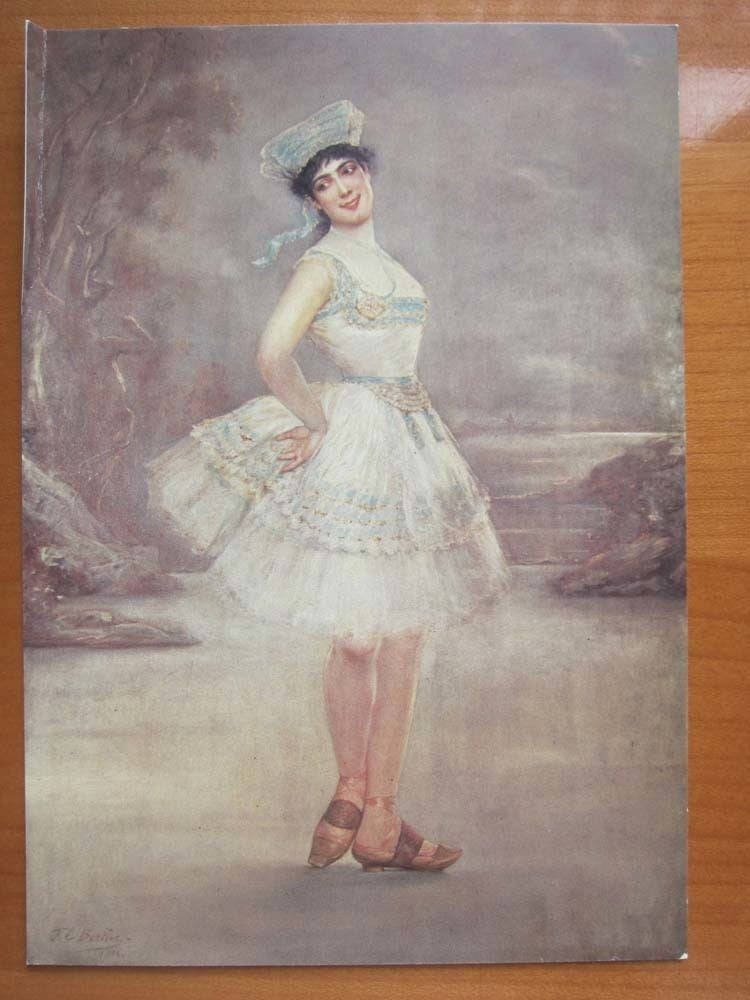Name Rosita Mauri | ||
 | ||
Died September 23, 1923, Paris, France | ||
Rosita mauri vivaldi gava
María Isabel Amada Antonia Rosa Mauri Segura or Roseta Mauri y Segura (born 15 September 1850 at Palma de Mallorca and died in Paris on 3 December 1923) was a dancer and ballet teacher of Catalan origin. A prima ballerina of international reputation, she was depicted frequently by artists, sculptors and photographers and was also the subject of several poetic tributes.
Contents

Classe contemporani rosita mauri
Career

The daughter of a Catalan ballet master and choreographer, Rosita Mauri began her dancing career in 1865 and went on to become one of Europe’s principal ballerinas. In 1877 the French composer Charles Gounod saw her dancing at La Scala, Milan, and persuaded the Paris Opera to engage her the following year, when she premiered in Gounod's Polyeucte. After she retired from full-time dancing, she taught future generations of dancers at the Ballet d’Opera's ‘Class of perfection’ between 1898-1920. On her death in 1923, she was buried in the Montparnasse cemetery. The Rosita Mauri Academy of Dance in Barcelona was named after her in 1978 and her home town of Reus has hosted an international dance competition in her name since 2002.

Because of her warm nature, Rosita Mauri was a favourite in artistic circles. The poet François Coppée created for her the very popular ballet La Korrigane (The Goblin Maiden), first performed in 1880 with music by Charles-Marie Widor and choreography by Louis Mérante. He was followed in 1885 by Jules Massenet, who created the ballet in his opera El Cid (1885) especially for her. After seeing her performing with her long black hair loose in the lead role of André Messager's Les Deux Pigeons the following year, the poet Stéphane Mallarmé wrote how impressed he was by her ritualistic animality (sa divination mêlée d’animalité).

She was frequently portrayed by artists. Edgar Degas painted her several times onstage: Fin d'arabesque (1877, see above); Danseuse sur la scène (1878, see gallery); Ballet vu d'une loge de l'Òpera (1885). Others included Édouard Manet (Portrait of Rosita Mauri 1877/9, also known as Jeune femme en rose (see gallery)), Auguste Renoir, Léon Bonnat, Léon Comerre, Anders Zorn (a portrait in 1888 and an etching in 1889), and Ludovic-Napoléon Lepic. She was also sculpted by Denys Puech, Laurent Marqueste, and Eusebi Arnau. The photographer Nadar made portraits of her throughout her career.

Another side of her artistic temperament was her quick temper. There is an anecdote that she refused to eat caviar because the tsar had turned to talk to a companion during one of her performances. Another rumoured to have suffered on her account was the French politician Antonin Proust, who had formerly studied art with his childhood friend Édouard Manet and was for a short period Minister for the Arts (1881-2). In March 1905 he shot himself two days after dining with Rosita Mauri, according to some papers as a result of quarreling with her.
